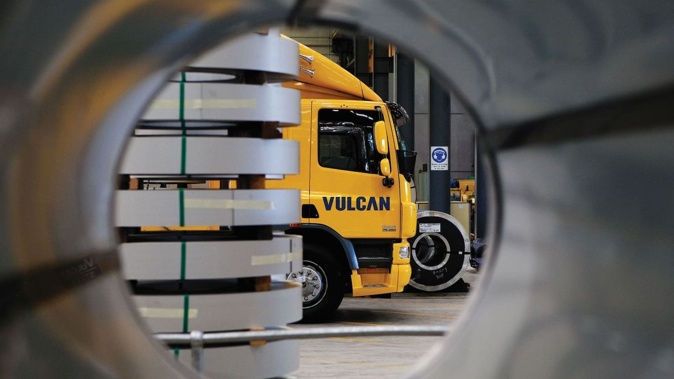
Australia and New Zealand steel distributor Vulcan Steel says tough economic conditions have driven its first-half profit down 64.8% to $9.2 million.
As a result, Vulcan slashed its first dividend by 79.2%, to 2.5 cents a share (from 12c).
The company’s earnings before interest, tax, depreciation and amortisation (Ebitda) came to $56.9m, down 30.5% from the previous corresponding period.
Managing director and chief executive officer, Rhys Jones, said trading in the first six months of the 2025 financial year was “variable and challenging”.
“The economic conditions in both Australia and New Zealand have continued to be difficult, with New Zealand in recession and the Australian economy remaining well below trend growth.
“Our customers have continued to face restrictive interest rate levels and weaker markets, and our 1H FY25 results reflect this, particularly in our steel division.”
 Vulcan’s net bank debt dropped $34.3m to $241.5m.
Vulcan’s net bank debt dropped $34.3m to $241.5m.
Despite the headwinds in the first half of 2025, Vulcan achieved a 10% return on capital employed.
During the half, Vulcan’s net bank debt dropped $34.3m to $241.5m by the end of December 2024, due to a decrease in working capital and continued positive operating cashflows.
Notwithstanding market conditions, Vulcan said its active customer accounts in the half remained steady when compared with second half of 2024.
Looking ahead, the lowering of interest rates had boosted confidence, even though general market activity had been subdued, it said.
“On a positive note, some segments and regions are showing signs of stabilisation and recovery,” the company said.
“Pre-sales activity, customer channel checks within Vulcan and independent business surveys, combined with the Reserve Bank of New Zealand’s reduction in the official cash rate since August 2024, point to improving market volume in the 2025 calendar year.”
In the second or third quarter of the 2025 calendar year, trading volumes were expected to start recovering, it said.
In Australia, expectations were for the metals segment to remain relatively steady — and helped by more improvement as hybrid sites get commissioned during the 2025 calendar year.
The Queensland and Western Australian markets were expected to perform better in 2025 compared with 2024.
The steel segment volume is likely to continue to face challenges, due to the economic conditions in Australia, especially in Victoria in the near term, and “disruptive market dynamics”.
Jamie Gray is an Auckland-based journalist, covering the financial markets and the primary sector. He joined the Herald in 2011.
Take your Radio, Podcasts and Music with you









